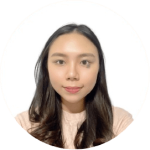Home / Compare Pet Insurance / Dog breeds that don’t sh…
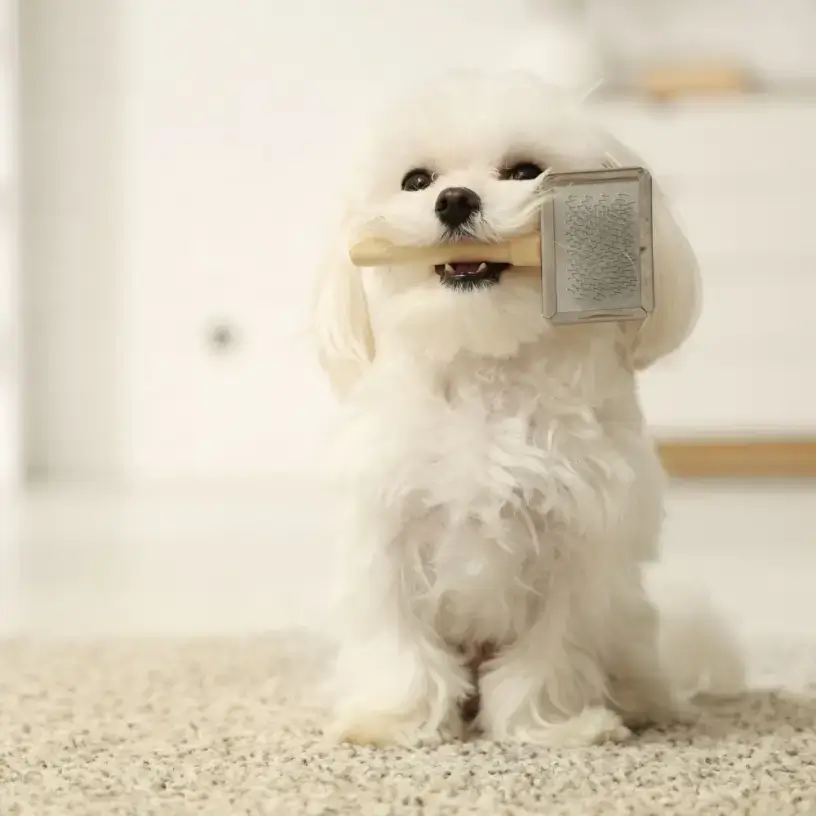
Key takeaways
- Hypoallergenic dogs often have hair-like coats or produce less dander, which can help reduce allergens for allergy sufferers, allowing families with mild allergies to own a dog.
- Low-shedding and hypoallergenic dogs generally have continuously growing coats or curly hair that requires brushing and regular grooming to prevent matting and maintain coat health.
- Hypoallergenic breeds are usually mixed breeds that may face health challenges from their parent breeds, such as skin conditions, joint problems, or dental issues. Pet insurance can help cover veterinary care, including these genetic disorders and chronic illnesses.
What are the dog breeds that don’t shed hair?
While all dogs shed, dog breeds that shed minimally are considered low-shedding or hypoallergenic. Non-shedding dogs (hypoallergenic dogs) are perhaps better described as low shedding since no dog is entirely hairless. These breeds typically have hair-like coats or minimal dander production, making them suitable for individuals sensitive to allergens.
Many people in Australia seek these breeds for health reasons, but it’s essential to research before you decide to get a new dog, as hypoallergenic is not their only characteristic. Every dog breed has a different personality, and you should always match the dog breed to your family’s needs.
What is a hypoallergenic dog?
A hypoallergenic dog is a dog that produces fewer allergens than other breeds. The proteins in a dog’s saliva cause most allergic reactions, as grooming transfers saliva to the dog’s hair and dander (dead skin cells).1 Because hair and dander may accumulate wherever your dog goes, their surroundings also become an allergy source. Hair and dander can trap pollen, mould, and other allergens, worsening allergy symptoms.
While no breed is entirely allergen-free, hypoallergenic dog breeds, such as Poodles and Bichon Frises, are better tolerated by people with mild allergies2. If you’re concerned about allergies or managing pet hair, breeds that shed minimally or are considered hypoallergenic can be ideal companions.
Are there non-shedding dogs?
No dog is completely non-shedding.1 Hypoallergenic breeds lose hair in much smaller amounts than other breeds, and proper care can help manage shedding and allergens. Additionally, their reduced shedding results in less dander, making them more suitable for allergy sufferers.
By choosing a low-shedding dog breed and maintaining proper care, you can enjoy the companionship of a dog with reduced allergenic impact.
Small dog breeds that don’t shed.
There are several breeds to choose from if you’re looking for a small, low-shedding dog. These breeds have minimal shedding and manageable grooming needs, making them perfect for Australian apartments and people with mild allergies.3
Shih Tzu
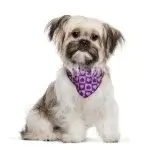 Characteristics: The Shih Tzu is a loving and regal breed known for its flowing, long coat. Despite its appearance, this breed sheds very little, as its hair grows continuously like human hair.4
Characteristics: The Shih Tzu is a loving and regal breed known for its flowing, long coat. Despite its appearance, this breed sheds very little, as its hair grows continuously like human hair.4- Care: Regular brushing and grooming are necessary to maintain their silky coat and prevent tangles.
Brussels Griffon
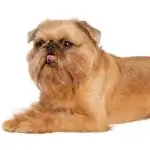 Characteristics: This spirited breed comes in rough and smooth coat varieties.5 The rough coat is wiry and sheds minimally, making it an excellent choice for allergy-conscious owners.
Characteristics: This spirited breed comes in rough and smooth coat varieties.5 The rough coat is wiry and sheds minimally, making it an excellent choice for allergy-conscious owners.- Care: Regular brushing is sufficient for a rough-coated Brussels Griffon. Smooth-coated varieties require even less maintenance.
Maltese
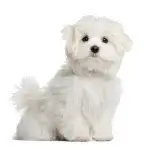 Characteristics: A small dog with long, silky white hair, they’re known for having a big personality in a small body and are friendly and affectionate.5
Characteristics: A small dog with long, silky white hair, they’re known for having a big personality in a small body and are friendly and affectionate.5- Care: Daily brushing to avoid tangles and regular bathing to clean their white coats.
Toy Poodle
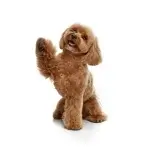 Characteristics: Smart and playful, with a curly, hypoallergenic coat.6 Known to be a great family dog and a lapdog, a toy poodle is ideal for families who live in an apartment.
Characteristics: Smart and playful, with a curly, hypoallergenic coat.6 Known to be a great family dog and a lapdog, a toy poodle is ideal for families who live in an apartment.- Care: Requires professional grooming every 6-8 weeks.
Yorkshire Terrier (Yorkies)
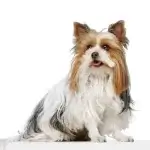 Characteristics: Tiny and bold, with a silky, non-shedding coat.7
Characteristics: Tiny and bold, with a silky, non-shedding coat.7- Care: Regular grooming is needed to prevent the matting of their long hair.
Havanese
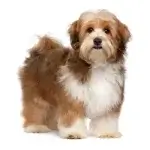 Characteristics: Havaneseare happy and curious, small and sturdy, and have a long, silky double coat.8
Characteristics: Havaneseare happy and curious, small and sturdy, and have a long, silky double coat.8- Care: Daily brushing and frequent trimming for maintenance.
Miniature Schnauzer
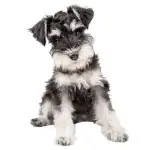 Characteristics: A spirited breed with a wiry, non-shedding coat.9 Schnauzers are loyal companions and can be an excellent guard dogs.
Characteristics: A spirited breed with a wiry, non-shedding coat.9 Schnauzers are loyal companions and can be an excellent guard dogs.- Care: Requires periodic hand-stripping or clipping to maintain coat texture.
Chinese Crested
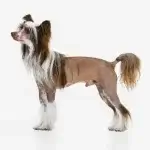 Characteristics: This unique breed comes in two varieties: hairless (with soft hair on the head, feet, and tail) and powderpuff (a fine, silky coat).10 Both shed very little.
Characteristics: This unique breed comes in two varieties: hairless (with soft hair on the head, feet, and tail) and powderpuff (a fine, silky coat).10 Both shed very little.- Care: Hairless types need skin care to prevent dryness, while powderpuff coats require weekly brushing to prevent tangles.
Italian Greyhound
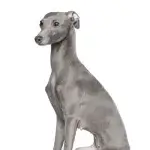 Characteristics: These sleek, elegant dogs have a smooth, short coat that sheds minimally.11 They are affectionate and make great companions.
Characteristics: These sleek, elegant dogs have a smooth, short coat that sheds minimally.11 They are affectionate and make great companions.- Care: Occasional brushing with a soft brush and regular baths will keep their coat shiny and clean.
Medium dog breeds that don’t shed.
Low-shedding, medium-sized dogs offer a perfect balance for those who want a companion that isn’t too small or too large. These breeds shed minimally and often have hypoallergenic qualities, making them excellent options for allergy sufferers.
Standard Schnauzer
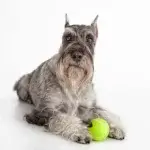 Characteristics: The Standard Schnauzer is a medium-to-large dog with a wiry, low-shedding coat.13 They are intelligent, energetic, and known for their loyal nature.
Characteristics: The Standard Schnauzer is a medium-to-large dog with a wiry, low-shedding coat.13 They are intelligent, energetic, and known for their loyal nature.- Care: Their coat requires regular hand-stripping or clipping and weekly brushing to prevent matting and maintain texture.
Lagotto Romagnolo
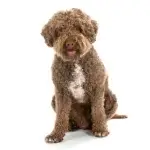 Characteristics: Originally bred as truffle hunters, Lagottos are friendly and eager-to-please dogs with a dense, curly coat that traps loose hair.14
Characteristics: Originally bred as truffle hunters, Lagottos are friendly and eager-to-please dogs with a dense, curly coat that traps loose hair.14- Care: Regular brushing and trimming prevent matting and keep their coat healthy.
Terrier Breeds (Kerry Blue Terrier, Bedlington Terrier, etc.)
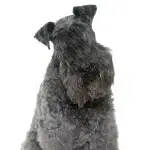 Characteristics: With a wavy, silky coat, this playful mixed breed sheds minimally and is often hypoallergenic.15 They are loyal and intelligent companions and can make a good watchdog.
Characteristics: With a wavy, silky coat, this playful mixed breed sheds minimally and is often hypoallergenic.15 They are loyal and intelligent companions and can make a good watchdog.- Care: Their non-shedding coat requires frequent brushing and regular trimming. Daily brushing helps avoid tangles; professional grooming is recommended every 6-8 weeks.
Miniature Poodle
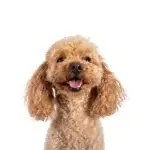 Characteristics: A medium-sized version of the popular Poodle, they share the same hypoallergenic, non-shedding traits.16
Characteristics: A medium-sized version of the popular Poodle, they share the same hypoallergenic, non-shedding traits.16- Care: Professional grooming every few months, along with regular brushing, is essential.
Large dog breeds that don’t shed
Large, low-shedding dogs are perfect for those who want a big, cuddly companion without dealing with excessive hair around the house. These breeds tend to have unique coat types or lower dander production, making them a good choice for allergy-sensitive households.
Standard Poodle
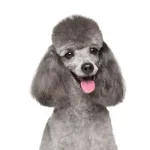 Characteristics: Standard Poodles are a classic low-shedding breed known for their hypoallergenic coat and high intelligence.17 Their curly coats trap loose hair, preventing shedding around the home.
Characteristics: Standard Poodles are a classic low-shedding breed known for their hypoallergenic coat and high intelligence.17 Their curly coats trap loose hair, preventing shedding around the home.- Care: Professional grooming every 4-8 weeks is necessary, along with weekly brushing to prevent matting.
Labradoodle (Labrador Retriever and Poodle Mix)
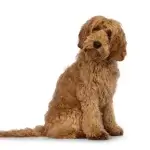 Characteristics: Labradoodles are popular for their friendly demeanour and hypoallergenic coats similar to a Poodle’s curly or wavy texture.18
Characteristics: Labradoodles are popular for their friendly demeanour and hypoallergenic coats similar to a Poodle’s curly or wavy texture.18- Care: Regular grooming is required to prevent matting, especially for those with curly coats. Labradoodles vary in shedding, depending on their genetics.
Goldendoodle (Golden Retriever and Poodle Mix)
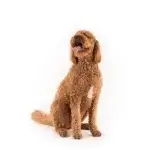 Characteristics: A Goldendoodle (Groodles) combines the Poodle’s intelligence and the Golden Retriever’s affectionate nature.19 They are known for their low-shedding, wavy, or curly coats.
Characteristics: A Goldendoodle (Groodles) combines the Poodle’s intelligence and the Golden Retriever’s affectionate nature.19 They are known for their low-shedding, wavy, or curly coats.- Care: Professional grooming every 6-8 weeks and regular brushing keeps their coat in good condition.
Portuguese Water Dog
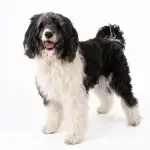 Characteristics: This water-loving breed is highly energetic and has a dense, curly coat that sheds minimally.20 They’re affectionate, highly trainable, and great for active families.
Characteristics: This water-loving breed is highly energetic and has a dense, curly coat that sheds minimally.20 They’re affectionate, highly trainable, and great for active families.- Care: Regular grooming and trimming are essential, along with weekly brushing.
Irish Water Spaniel
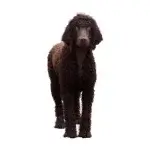 Characteristics: A rare breed, Irish Water Spaniels have a tight, curly coat that sheds very little.21 They are playful and make excellent companions for active households.
Characteristics: A rare breed, Irish Water Spaniels have a tight, curly coat that sheds very little.21 They are playful and make excellent companions for active households.- Care: Their coats require brushing and occasional trims to keep them tidy.
Giant Schnauzer
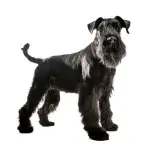 Characteristics: A larger version of the Standard Schnauzer, the Giant Schnauzer has a protective personality and a low-shedding, wiry coat.22
Characteristics: A larger version of the Standard Schnauzer, the Giant Schnauzer has a protective personality and a low-shedding, wiry coat.22- Care: Regular hand-stripping or professional grooming keeps their coat in good condition, along with frequent brushing.
Afghan Hound
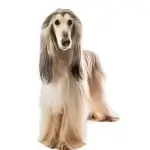 Characteristics: This elegant breed has a long, silky coat that sheds minimally.23 They are gentle and independent, though they require significant grooming.
Characteristics: This elegant breed has a long, silky coat that sheds minimally.23 They are gentle and independent, though they require significant grooming.- Care: Daily brushing and bathing are needed to maintain their luxurious coat.
Caring for a non-shedding dog breed
Pet parents would think that a non-shedding dog breed would be low maintenance. However, it is usually the opposite. These breeds often have single-layer coats or curly hair that grows continuously, trapping loose fur and reducing shedding. Low-shedding coats are great for dog allergies, but these coat types need more maintenance to maintain the dog’s skin and hair health.
When getting your new dog, ask your breeder for professional advice on how to care for your pet’s hair. Low-shedding coats require regular cutting to maintain a reasonable length and frequent brushing and combing to prevent matting and knots. Hairless dog breeds may require additional skincare, particularly during summer, due to their lack of UV protection.
To ensure your furry friend remains healthy and helps to minimise allergens in your home, follow these care tips:
- Regular grooming: Regular brushing (2-3 times a week) prevents tangles and keeps shedding under control. Bring your dog to a professional groomer every 4-8 weeks to maintain their coat’s texture and health.
- Frequent bathing: Use hypoallergenic dog shampoos to clean and maintain coat health and reduce dander.
- Healthy diet: A balanced diet helps your dog maintain healthy skin and coat, reducing shedding and flaking. Choose food that provides a balanced diet rich in omega-3 fatty acids.
- Home maintenance: Use HEPA filters and clean regularly to minimise allergens. Wash your dogs’ blankets, bedding and toys frequently as well.
- Veterinary checkups: Routine checkups can address skin conditions or allergies that may increase shedding.
Pet insurance for your non-shedding friend
Most non-shedding dogs are mixed breeds, and although these dogs are beloved for their unique traits and personalities, they can inherit health problems from their parent breeds.1 Common issues include joint problems like hip dysplasia in larger mixes, skin conditions in curly-coated breeds, and dental problems in smaller breeds.1 These breeds can also be prone to chronic illnesses like diabetes, thyroid disorders, or allergies, depending on their genetic background. Regular veterinary care and proper grooming are essential to managing these risks.
Pet insurance can help protect your family pet’s health and your finances. It may cover costs associated with genetic disorders, accidents, and chronic illnesses. Policies can include routine and preventive care, such as vaccinations and dental cleanings, which help catch potential issues early. Insurance can significantly ease the financial burden if your dog has a health emergency or needs expensive treatment like surgery for orthopaedic conditions. Choosing pet insurance with comprehensive cover for hereditary and breed-specific conditions can help you provide the best care for your dog.
Meet our pet insurance expert, Adrian Taylor
As a General Insurance expert with over 13 years’ experience in financial services, Adrian Taylor knows that dogs and cats get themselves into all sorts of mischief. One part of Adrian’s work is to help empower consumers to understand how pet insurance can help save them from exorbitant vet bills when their pet gets injured or falls ill.
Want to know more about pet insurance?
1 Dogs Victoria. Low Shedding and Hypoallergenic Dogs. Accessed November 2024.
2 Purina AU. Hypoallergenic dog breeds. Accessed November 2024.
3 PetMD. 30 Hypoallergenic dogs that don’t shed a lot. Accessed November 2024.
4 American Kennel Club. Shih Tzu Breed Traits and Characteristics. Accessed November 2024.
5 American Kennel Club. Brussels Griffon Breed Traits and Characteristics. Accessed November 2024.
6 American Kennel Club. Maltese Breed Traits and Characteristics. Accessed November 2024.
7 American Kennel Club. Toy Poodle Breed Traits and Characteristics. Accessed November 2024.
8 American Kennel Club. Yorkshire Terrier Breed Traits and Characteristics. Accessed November 2024.
9 American Kennel Club. Havanese Breed Traits and Characteristics. Accessed November 2024.
10 American Kennel Club. Miniature Schnauzer Breed Traits and Characteristics. Accessed November 2024.
11 American Kennel Club. Chinese Crested Breed Traits and Characteristics. Accessed November 2024.
12 American Kennel Club. Italian Greyhound Breed Traits and Characteristics. Accessed November 2024.
13 American Kennel Club. Standard Schnauzer Breed Traits and Characteristics. Accessed November 2024.
14 American Kennel Club. Lagotto Romagnolo Breed Traits and Characteristics. Accessed November 2024.
15 PetMD. 22 Terrier dog breeds. Accessed November 2024.
16 American Kennel Club. Miniature Poodle Breed Traits and Characteristics. Accessed November 2024.
17 American Kennel Club. Standard Poodle Breed Traits and Characteristics. Accessed November 2024.
18 Greencross Vets. Labradoodle owners guide. Accessed November 2024.
19 Hill’s Pet. Groodle Crossbreed: Information and Personality Traits. Accessed November 2024.
20 American Kennel Club. Portuguese Water Dog Breed Traits and Characteristics. Accessed November 2024.
21 American Kennel Club. Irish Water Spaniel Breed Traits and Characteristics. Accessed November 2024.
22 American Kennel Club. Giant Schnauzer Breed Traits and Characteristics. Accessed November 2024.
23 American Kennel Club. Afghan Hound Breed Traits and Characteristics. Accessed November 2024.


